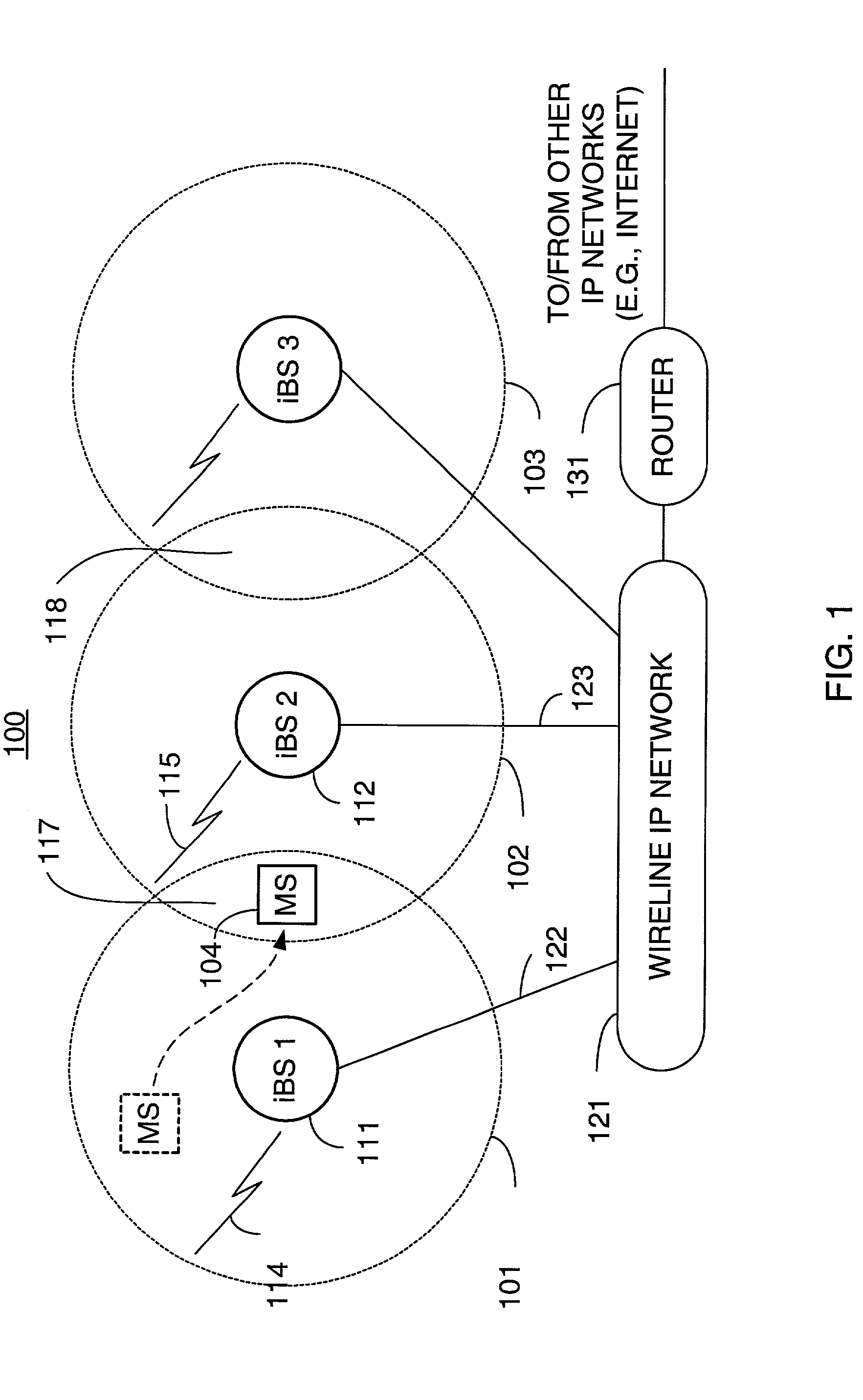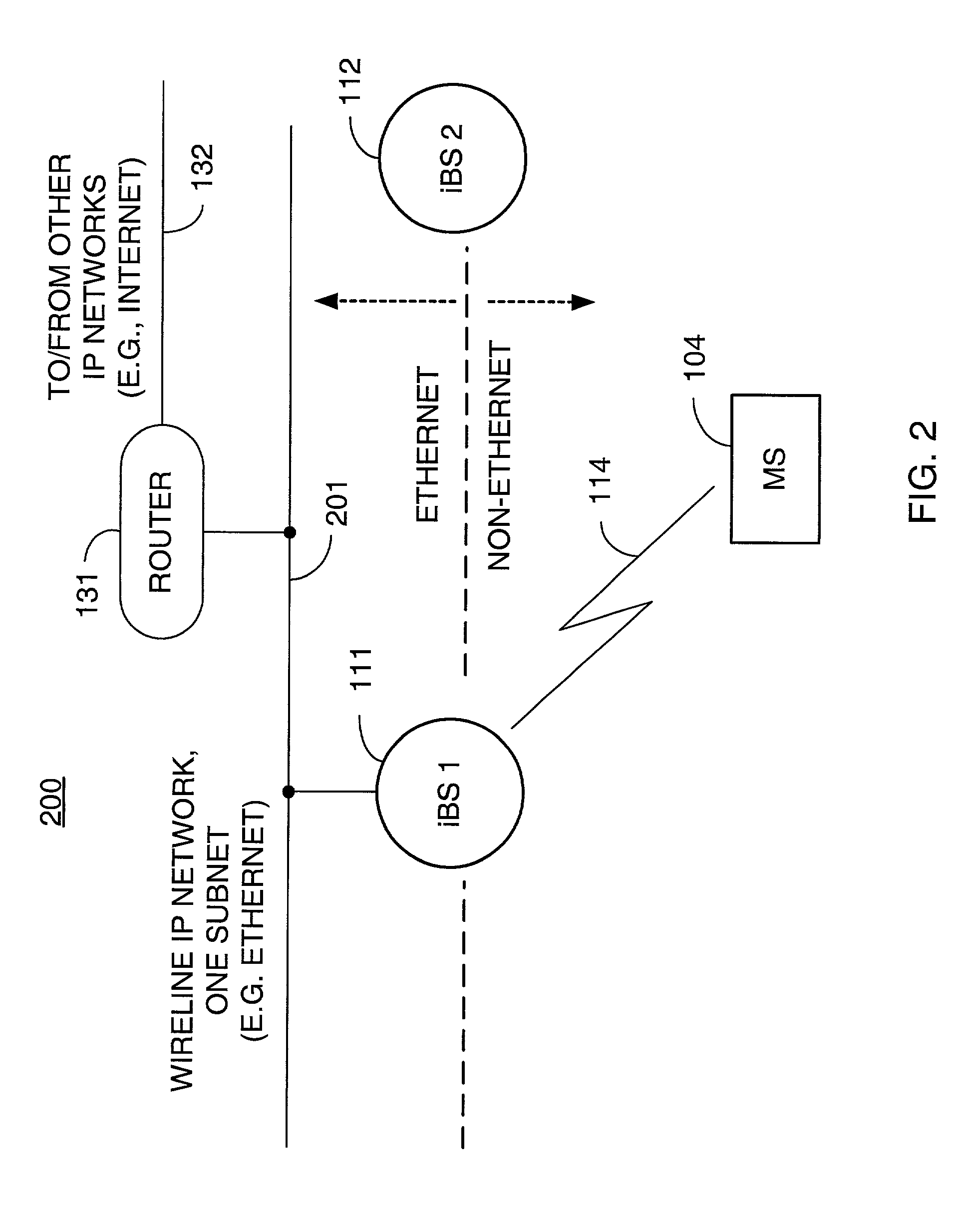Packet distribution and selection in soft handoff for IP-based base stations among multiple subnets
a soft handoff and subnet technology, applied in the field of wirelesstowireline and wirelesstowireless communication systems, can solve the problems of incompatible systems co-existing, difficult to roam from one system to another, and no wireless technology has emerged as a common and long-term universal solution
- Summary
- Abstract
- Description
- Claims
- Application Information
AI Technical Summary
Benefits of technology
Problems solved by technology
Method used
Image
Examples
example 1
[0086]By way of specificity to summarize the procedure step-by-step, consider the arrangement of FIG. 13 wherein Packet A is sent from correspondent host 1305 attached to IP core network 1331, that is, the packet has IP destination address IPA and is sent from “outside” Subnet A. Since Packet A with destination address IPA is sent outside Subnet A, it is eventually routed to router 1322. Once router 1322 receives Packet A, it checks its Duplication Table. Packet A therefore will be duplicated with IP destination address of IPB as depicted in the third column of Table 4, and this duplicated packet is be routed to MS 104 via iBS B. Besides, Packet A is routed to MS 104 via iBS A as a standard packet.
[0087]If there are multiple nearest routers an iBS connects to, only one of them receives the packet sent from host 1305. Therefore only one nearest router will duplicate and distribute the packet.
[0088]As outlined above, each time a mobile station moves to a new Subnet, it must acquire a ...
example 2
[0089]For this example, suppose for the moment that host 1305 is connected to Subnet A, that is, Packet A is sent from “inside” Subnet A, so that both router 1322 and iBS A respond to an ARP REQUEST with the mobile station's shadow address. Therefore, Packet A eventually arrives at both iBS A and router 1322. The one arriving at router 1322 is forwarded to the IP address(es) in third column of the Table 4 stored in router 1322. Since this packet arriving at router 1322 is due to the entry in the Duplication Table rather than the normal routing table, router 1322 does not perform normal routing so the packet will not be sent to iBS A again. In this example, only one of the nearest routers maintains the shadow address in its Duplication Table, so that only one of them duplicates and distributes a packet.
2.3 Distribution of Same Data in Multiple Streams
[0090]When the nearest router sends out the duplicated IP packets, these packets have different IP addresses of the mobile station so t...
PUM
 Login to View More
Login to View More Abstract
Description
Claims
Application Information
 Login to View More
Login to View More - R&D
- Intellectual Property
- Life Sciences
- Materials
- Tech Scout
- Unparalleled Data Quality
- Higher Quality Content
- 60% Fewer Hallucinations
Browse by: Latest US Patents, China's latest patents, Technical Efficacy Thesaurus, Application Domain, Technology Topic, Popular Technical Reports.
© 2025 PatSnap. All rights reserved.Legal|Privacy policy|Modern Slavery Act Transparency Statement|Sitemap|About US| Contact US: help@patsnap.com



